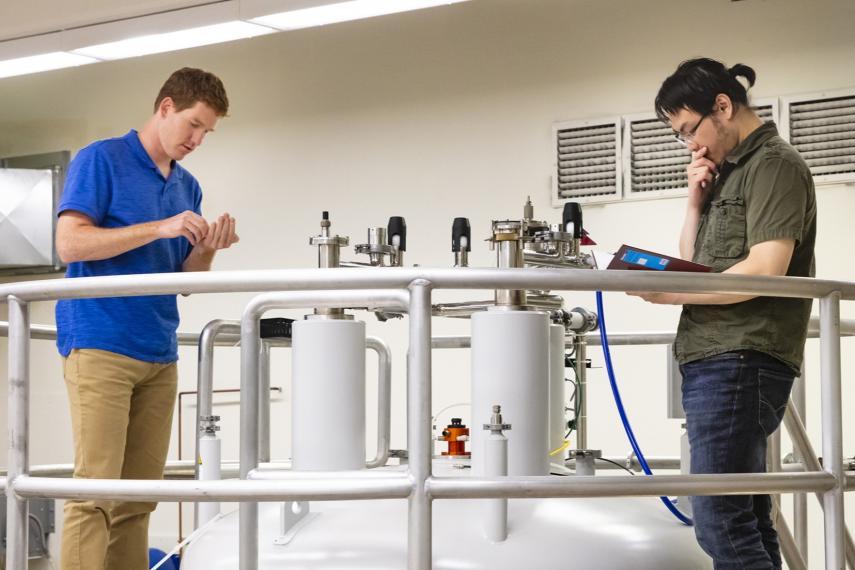Unfolding Mysteries: U of G's Breakthrough in Protein Research

At the University of Guelph (U of G), Drs. Vladimir Ladizhansky and Leonid S. Brown from the Department of Physics and Biophysics Interdepartmental Group are making groundbreaking strides in understanding how proteins work, particularly those that reside in cell membranes. Their latest research which was recently published in Science Advances in collaboration with graduate students Peng Xiao, Philip Drewniak and Dylan Dingwell, sheds light on the complex process of membrane protein unfolding, which is crucial for understanding various biological functions and diseases.
The Fascinating World of Proteins
Proteins are essential molecules in our bodies, performing a wide range of functions. They need to fold into specific three-dimensional shapes to work properly. Membrane proteins are embedded in cell membranes and are particularly tricky to study due to their complex environment. This complexity is due to the interactions between the protein and the surrounding lipids which affect the protein's structure and function. Understanding how membrane proteins fold and unfold can provide insights into their functions, factors contributing to their stability, and how to tackle diseases caused by their malfunction.
The research team at U of G focused on a specific protein called human aquaporin 1 (hAQP1), which acts as a water channel in cells. Using advanced techniques like solid-state nuclear magnetic resonance (NMR) spectroscopy (which is a powerful tool used by scientists to study the structure of molecules including proteins, allowing researchers to visualize how atoms are arranged within a protein), they studied how this protein unfolds when exposed to heat.
Their findings reveal a simple two-step pathway of unfolding which begins with the unfolding of a structured loop outside the cell membrane. This step is crucial because the loop keeps the entire protein stable. Next, the main part of the protein that spans the cell membrane unfolds all at once.
“We wanted to understand how proteins maintain their structure and how various interactions contribute to protein stability,” said Ladizhansky.
Overcoming Challenges
The journey was not without obstacles. One major issue was ensuring that their samples remained stable during experiments, as the high-frequency spinning (called magic angle spinning) required for solid-state NMR could sometimes damage the samples. They overcame these obstacles through persistence and innovative problem-solving, refining their methods to obtain accurate results.
"It took us quite a bit of time before we got good results. We had to develop new methods such as stabilizing samples and refining techniques to ensure precise measurements of protein changes," says Ladizhansky.
A Message of Inspiration
The implications of this research extend beyond fundamental science. The methods developed by Ladizhansky and his team can be used to study other membrane proteins, providing a broader mechanistic understanding of their roles in health and disease. This research not only highlights the importance of basic scientific inquiry but also showcases the potential for practical applications in medicine. This knowledge can be applied to develop new treatments for diseases linked to protein misfolding, such as cystic fibrosis and Alzheimer’s disease.
For young aspiring scientists, this story serves as a testament to the power of curiosity and perseverance. “Even though sometimes you don't see any immediate application, any technological or medical advance we have today relies on fundamental discoveries made in the past,” said Ladizhansky.
By exploring the intricate details of protein folding, Ladizhansky and Brown's work exemplifies the exciting research happening at the University of Guelph, inspiring the next generation of scientists to pursue their passions and contribute to the ever-expanding world of scientific knowledge.
Funding Acknowledgement: This work was supported by the Natural Sciences and Engineering Research Council of Canada to V.L. (RGPIN-2020-04489) and L.S.B. (RGPIN-2018-04397).
Read the full article in Science.
This article was originally published in the CEPS 2023-24 Annual Report.